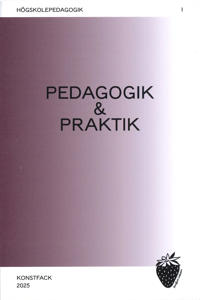Stort grattis Ann-Catrine!!
– Jag är otroligt glad över att det långsiktiga arbetet med akademisk litteracitet för breddat deltagande vid Skrivlyftet på Mittuniversitetet synliggörs och får ett erkännande. Priset delas förstås också av alla som samarbetat med mig inom Skrivlyftet på Mittuniversitetet och på andra universitet, inte minst syskonprojektet Skrivum vid Umeå universitet, säger hon.

Nomineringen lyder:
Vi nominerar Ann-Catrine Edlund, professor i svenska språket vid Mittuniversitetet, till Include-priset 2025 för hennes insatser inom breddad rekrytering och breddat deltagande i högre utbildning. Genom sitt initiativ och ledarskap i Skrivlyftet vid Mittuniversitetet har hon på ett banbrytande sätt främjat inkludering, mångfald och likvärdiga förutsättningar för studenters akademiska litteracitetsutveckling. Hennes arbete utgör ett tydligt exempel på hur högre utbildning kan ta ansvar och främja lika rättigheter och möjligheter inom utbildning, i linje med Include-prisets syfte.
Studenters akademiska litteracitet är avgörande för deras framgång i högre utbildning, och forskning visar vikten av att integrera detta stöd i undervisningen. I linje med detta initierades Skrivlyftet vid Mittuniversitetet 2017, ett projekt som engagerar lärarlag att integrera ämnesintegrerat skrivande i undervisningen. Denna satsning är en medveten reaktion på det ofta förekommande bristperspektivet, där studenters skrivförmåga betraktas som ett individuellt problem. I stället riktas fokus mot de pedagogiska och institutionella förutsättningar som utbildningarna erbjuder – och hur dessa kan utvecklas för att ge alla studenter tillgång till akademisk litteracitet. Skrivlyftet vid Mittuniversitetet utgår från ett tydligt ansvar som högre utbildning har enligt nationella och internationella styrdokument, såsom Högskoleförordningen, Bolognaprocessens akademisering av yrkesutbildningar och Agenda 2030:s mål om jämlik utbildning av hög kvalitet. Dessa dokument betonar vikten av att universitet och högskolor aktivt arbetar med att erbjuda likvärdiga och inkluderande lärandemiljöer. Skrivlyftet har kunnat genomföras och utvecklas tack vare ett starkt och långsiktigt stöd från universitetsledningen, som genom finansiering visat att arbetet med akademisk litteracitet är en prioriterad fråga.
Skrivlyftet vilar på fyra principer hämtade från forskningsfältet Academic Literacies: 1) transformation av undervisning och lärandemiljöer, 2) erkännande av ämneslärare som experter på sina skriftkulturer, 3) institutionellt ansvar för studenters skrivutveckling och 4) inkluderande stöttning till alla studenter. En utmärkande aspekt av Skrivlyftet är dess fokus på att ge lärare förutsättningar att stötta studenters akademiska litteracitet. Genom workshops för lärarlag, ledda av skrivdidaktiker, har projektet skapat arenor för kollegial dialog och kritisk reflektion. Detta har möjliggjort en transformation av undervisningspraktiker och bidragit till både pedagogisk och programövergripande förändring. Resultat och erfarenheter från projektet har mynnat ut i antologin Skrivlyftet vid Mittuniversitetet – akademisk litteracitet i praktiken som fungerar som en samlad reflektion och kunskapsresurs för fortsatt utvecklingsarbete.
Projektet har fått starkt genomslag: det har nu permanentats vid Mittuniversitetet, tilldelats ytterligare resurser och inspirerat liknande satsningar vid andra lärosäten, såsom Skrivum vid Umeå universitet. Det har också lett till uppstarten av nätverket Litteraciet och lärande i högre utbildning – LOL – som arrangerat välbesökta webbinarier och två välbesökta konferenser. Framöver är det LOL-nätverket som, i samarbete med universitetspersonal, driver arbetet med att stärka akademisk litteracitet genom att skapa förutsättningar för samverkan mellan forskning och pedagogisk praktik, initiera ny forskning och bidra till att forskningsresultat stärker utbildningsmiljöer på både kort och lång sikt.
Ann-Catrine Edlund är inte bara en drivande kraft i utvecklingen av akademisk litteracitet, utan också en generös mentor som aktivt uppmuntrar och stöttar juniora kollegor i deras pedagogiska och akademiska utveckling. Hennes arbete är ett föredöme för hur högre utbildning kan ta ansvar för att skapa jämlika och inkluderande lärmiljöer – och förtjänar att uppmärksammas med Include-priset.
Nominerad
Ann-Catrine Edlund, professor i Svenska språket, Mittuniversitetet
Nominanter
Ingrid Lennartson-Hokkanen, Mittuniversitetet
Ann-Marie Eriksson, Göteborgs universitet
Erika Sturk, Umeå universitet och Göteborgs universitet





